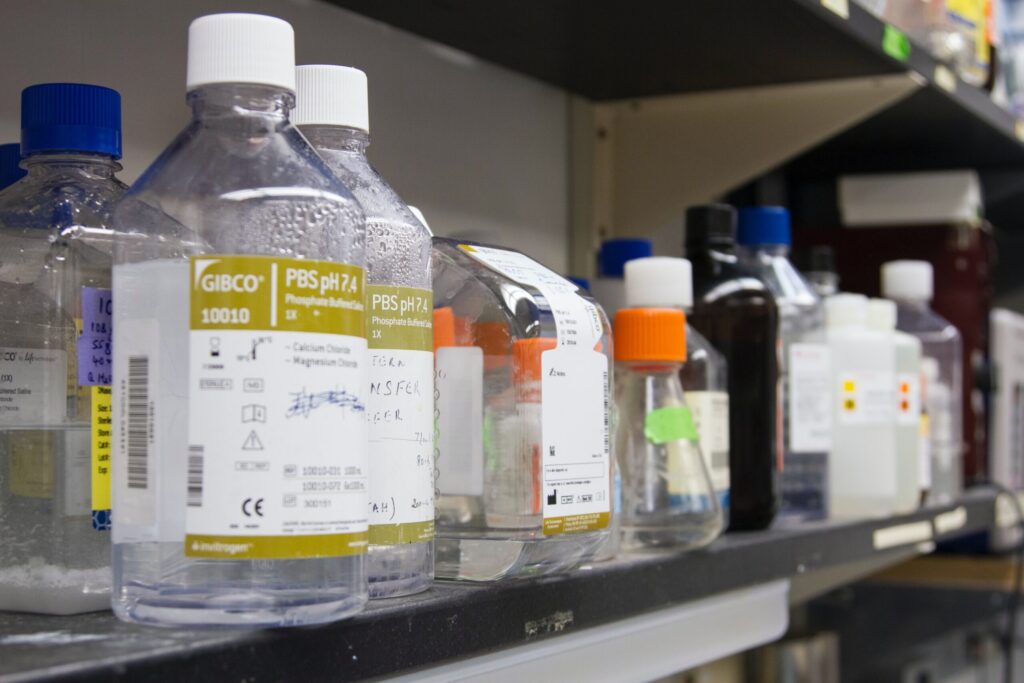Hazardous, Chemical, and Prescribed Waste
Hazardous, Chemical, and Prescribed Waste
Keep it simple, safe and fully compliant. We collect, classify, transport and arrange lawful disposal or treatment of hazardous, chemical and prescribed industrial wastes across Victoria — backed by a compliance-first approach aligned with the Environment Protection Act 2017 and the Environment Protection Regulations 2021.
Trusted hazardous-waste specialists for Victorian industry. From one-off hazardous pickups to ongoing chemical collection programs, we remove your regulatory burden and reduce your environmental risk — handling classification, placarding, transport, tracking and lawful reception so you can focus on your business.
Our services (what we do)
- On-site waste assessment & sampling to determine waste category and disposal pathway.
- Support with classification of industrial waste to meet Part 4.2 requirements and applicable thresholds.
- Secure collection and transport using placarded vehicles and trained drivers.
- Chain-of-custody, Waste Tracker coding and manifest preparation to demonstrate compliance.
- Collection and disposal at licensed facilities and support with waste reporting and declaration of use.


Why choose us — Compliance first
- Legislation-aware: We operate to the Environment Protection Act 2017 / Regulations 2021 framework and use EPA Victoria classification protocols so your waste duties are met.
- Risk reduction: Proper classification and handling reduces the risk of regulatory penalties, environmental harm and business disruption. The general environmental duty requires businesses to understand and minimise risks from pollution and waste.
- Documented chain of custody: You receive certificates, manifests and Waste Tracker codes so audits and reporting are straightforward.
- Experienced drivers & vehicles: Our teams are trained to handle hazardous materials, placarding, emergency information panels and safe transfer procedures.
| Waste Code | Description |
|---|---|
| C100 | Alkaline solids or alkaline solutions with pH value of 10 or more, including caustic soda, alkaline cleaners and waste lime. |
| D140 | Chromium compounds including hexavalent and trivalent. |
| D190 | Copper compounds. |
| D210 | Nickel compounds. |
| D220 | Lead and lead-based compounds. |
| D230 | Zinc compounds. |
| D300 | Non-toxic salts including sodium chloride, calcium chloride. |
| E100 | Oxidising agents (including peroxides). |
| F100 | Aqueous-based wastes from the production, formulation and use of paints, lacquers, varnish, inks, dyes and pigments. |
| F110 | Aqueous-based wastes from the production, formulation and use of resins, latex, plasticisers, glues and adhesives. |
| F120 | Solvent-based wastes from the production, formulation and use of paints, lacquers, varnish, inks, dyes and pigments. |
| F130 | Solvent-based wastes from the production, formulation and use of resins, latex, plasticisers, glues and adhesives. |
| G110 | Organic solvents excluding halogenated solvents. |
| G150 | Halogenated organic solvents. |
| H100 | Waste from the production, formulation and use of biocides, fungicides and phytopharmaceuticals |
| J100 | Waste oils, hydrocarbons, emulsions and transformer fluids excluding polychlorinated biphenyls. |
| J120 | Waste oil/water, hydrocarbons/water mixtures or emulsions. |
| J130 | Triple interceptor waste and stormwater contaminated with oil or hydrocarbon |
| J170 | Used oil filters. |
| L200-H | Industrial wastewater (excluding sewage) not otherwise specified in this schedule. |
| M130 | Non-halogenated, non-solvent organic chemicals, not otherwise specified in this schedule. |
| M150 | Phenols, phenol compounds including chlorophenols. |
| N100 | Rigid steel or plastic containers with an original volume less than 200 litres contaminated with RPW (transport). |
| N105 | Rigid steel or plastic containers with an original volume equal to or greater than 200 litres contaminated with reportable priority waste (transport) |
| N110 | Bags or containers contaminated with RPW (transport) not covered by the description of waste for items 80 and 81 |
| N120 | Soil that has contaminant concentrations exceeding the upper limits for fill material contaminant concentrations specified in the Waste Disposal Categories—Characteristics and Thresholds or contains asbestos |
| N250 | Absorbents contaminated with residues of hazardous substances. |
| R100 | Clinical and related wastes, including biomedical waste, not otherwise specified in items 97, 98 or 99 of "Schedule 5—Waste Classification" of the Environment Protection Regulations 2021 |
| R120 | Soil that has contaminant concentrations exceeding the upper limits for fill material contaminant concentrations specified in the Waste Disposal Categories—Characteristics and Thresholds or contains asbestos. |
| R130 | Cytotoxic substances |
| R140 | Waste from the production of pharmaceutical products and cosmetics, not otherwise specified in items 96, 97 or 98 of "Schedule 5—Waste Classification" of the Environment Protection Regulations 2021 |
| T100 | Waste chemical substances arising from laboratories, research and development, or teaching activities. |
| T170 | Household chemicals consolidated as part of a Victorian government program. |
